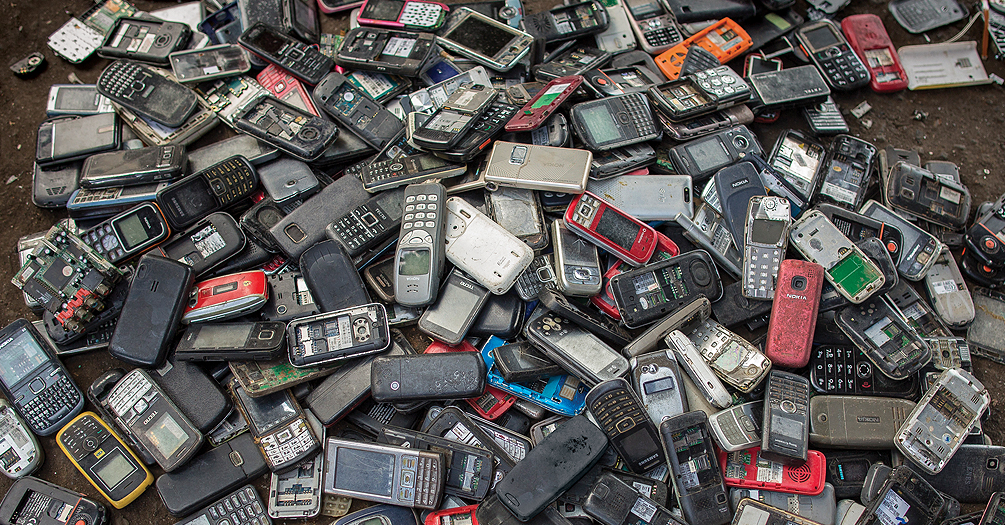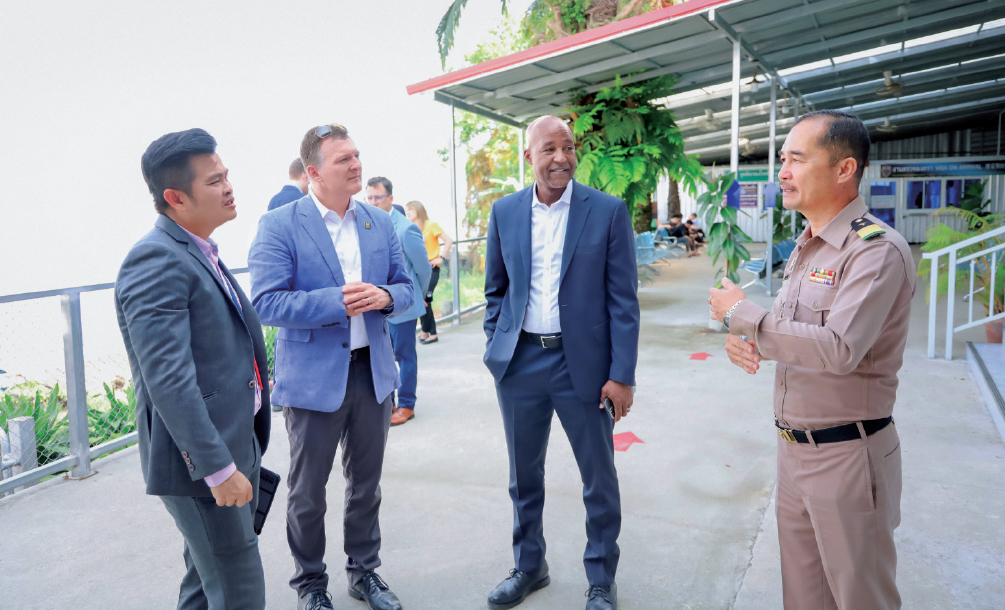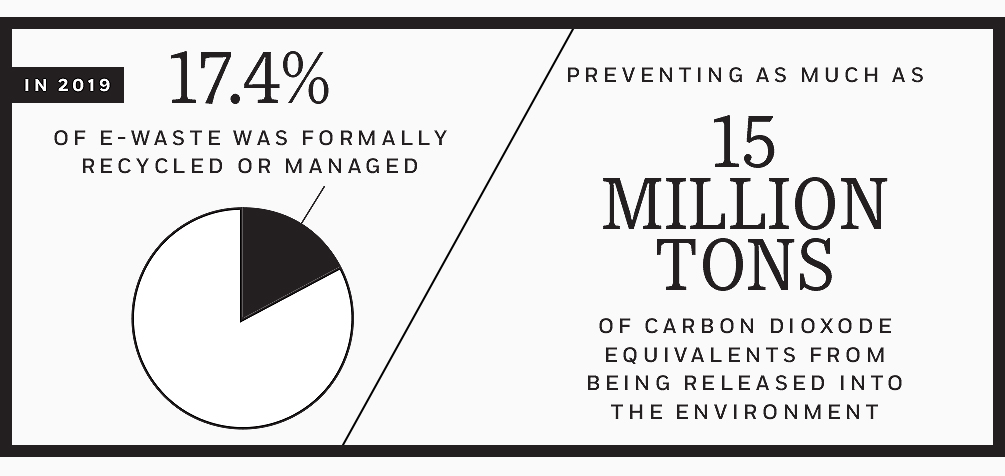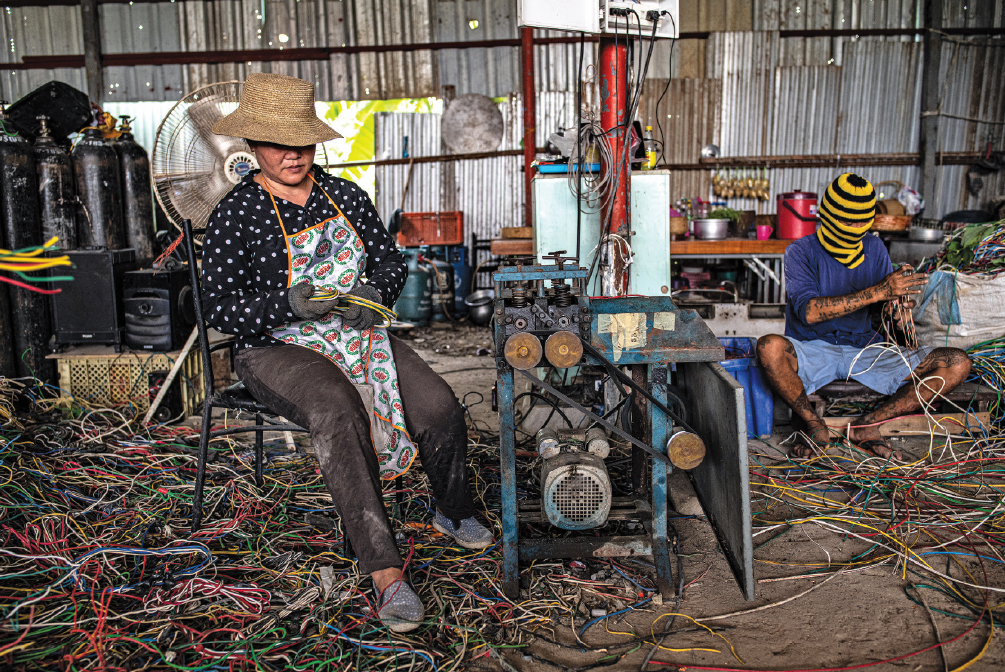Exposure Research Lab helps informal e-waste recyclers, communities in other countries

By Jessica M. Scully
What happens to old laptops, smartphones and smart appliances after they’ve been replaced? It’s an important question. These and other forms of e-waste contain substances, including mercury, lead and cadmium, that are harmful to people and the environment. They also have valuable materials that could be recycled, which would reduce carbon emissions from new materials.
But globally, just 17.4% of e-waste produced in 2019—the most recent statistical year
available—ended up at a formal management or recycling facility, according to the
Global E-Waste Statistics Partnership. An unknown amount more is recycled informally,
often in people’s homes, without occupational and environmental safeguards.
The Exposure Research Lab at the University of Michigan School of Public Health has been studying how to make this informal recycling work safer in Thailand. Since the process of informal recycling is similar across countries, lessons learned there could be applied broadly.
Rick Neitzel, professor of Environmental Health Sciences and Global Public Health, founded the lab when he arrived at Michigan Public Health in 2011. The lab studies how to keep workers safe and healthy throughout their careers, with particular focus on noise exposure and injury risks.

Neitzel’s interest in e-waste began during a project studying noise and injuries with small-scale gold miners in Ghana. He wandered into an e-waste processing market in the center of Accra, Ghana’s capital. It was an unintended but eye-opening stop.
“Experiencing just how intense this work was and how bad the conditions were for the workers, but also at the same time appreciating this is recycling and a good thing even though it looks so bad in this particular context, got my gears spinning,” he said.
E-waste is an enormous and growing problem globally. In 2019, 53.6 million metric tons of it were generated worldwide, an increase of 21% since 2014, according to the Global E-Waste Statistics Partnership. Ensuring less is produced and more is recycled is essential to address climate change. The 17.4% being formally recycled or managed in 2019 prevented as much as 15 million tons of carbon dioxide equivalents from being released into the environment; recycling more e-waste would lead to substantial additional benefits, according to the partnership.
Since his initial experience in Ghana, Neitzel has studied informal e-waste recyclers in Ghana, Chile and Thailand. While in Chile, repair is more common, actual recycling efforts have a similar model. Given the problem e-waste presents, informal waste recyclers provide an important service, but their situation is “a huge environmental justice issue,” he said.
Experiencing just how intense this work was and how bad the conditions were for the workers, but also at the same time appreciating this is recycling and a good thing even though it looks so bad in this particular context, got my gears spinning.”
“They’re preventing all this hazardous material from going into landfills or being disposed of in the environment improperly, so it’s very important green work,” he said. But they often perform the work in their homes and don’t have proper tools and protective equipment to work safely.
“These workers are taking on the burden of the recycling that maybe you and I have not been able to do, and they’re paying the price for it by being exposed to all these harmful chemicals, exposing their families who also live in the homes to harmful chemicals, and potentially contaminating their local environment too.”

Neitzel and his team have performed e-waste assessments in several southeast Asian countries, but the lab’s most extensive studies with workers have been in Thailand with Neitzel’s Thai collaborator, Kowit Nambunmee, an associate professor at Mae Fah Luang University.
Starting in 2016, an interdisciplinary team of researchers and students from the University of Michigan School of Public Health, the College of Engineering, and the Ross School of Business and two Thai universities, along with community health volunteers, ran three multi-week campaigns studying Thai informal e-waste workers.
They measured workers’ exposure to contaminants in air, water, soil and food, and in dust on food preparation and working surfaces. They also measured biomarkers of contaminants in workers’ blood and urine. They collected data on workers’ sociodemographic information, along with work history, self-reported health history and other health information, and collected video recordings of recycling.

A positive finding for the workers was that e-waste recycling increased their income three to four times, dramatically benefiting their families. But the researchers found widespread lead contamination in people’s homes, on surfaces where they prepare food and in their bodies. The researchers also found high rates of occupational injuries.
To open electronics and remove the recyclable materials inside, the workers typically used a lawnmower blade that had been dulled on a few edges to make a handle, Neitzel said.
“If you imagine hacking away at electronics with very crude tools, you get eye injuries and hand injuries,” Neitzel said. “I’ve never seen another workforce that reported so many different injuries from their work.”
To improve the workers’ situation, the researchers prototyped safer tools for the workers to test. Then the COVID-19 pandemic hit. The Exposure Research Lab’s team was unable to return to Thailand until May 2023. Neitzel and others at the lab are working on rebuilding the relationships needed to be back in the community and continue work.
The team hopes to implement more ways to make the work safer. Workers could be educated not to recycle batteries, which contain large amounts of lead, and to send them to a recycling center, Neitzel said. If that’s not feasible, workers could be given recommendations on how to set up home workshops to avoid lead contamination. Nambunmee is developing a possible training module to help workers understand how to recycle e-waste most efficiently and safely in their homes.
The work can be made safer. But moving toward a sustainable economy would also mean educating consumers to generate less e-waste, Neitzel said.
“Do I need a brand-new phone 12 months after I bought my old phone? Probably not,” he said. “Maybe I can use this electronic device for more of its useful life.”

- Interested in public health? Learn more here.
- Read ‘Changing the world because of my science’ in this issue of Findings.
- Read how Michigan Public Health is exploring environmental equity and impacts on human health.
- Also in this issue of Findings: A doctoral student feels compelled to help others: ‘The point is human health.’
- Support research and engaged learning at the School of Public Health.

